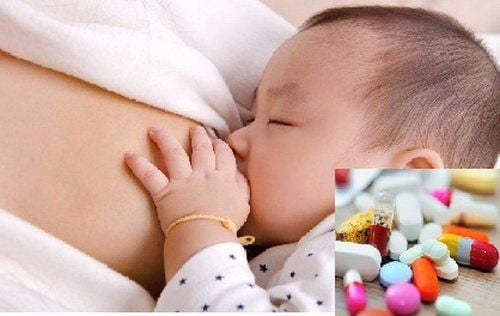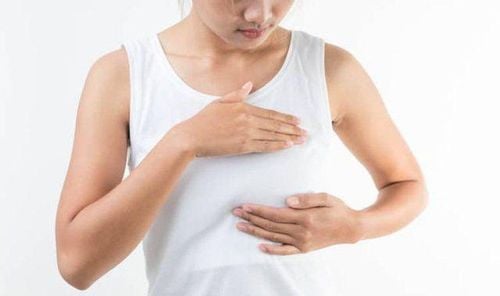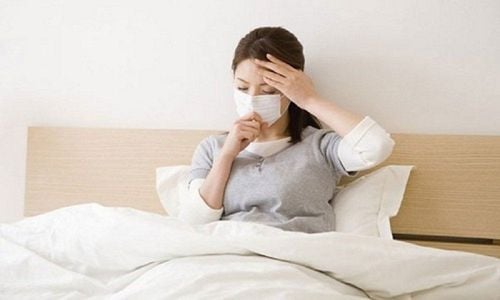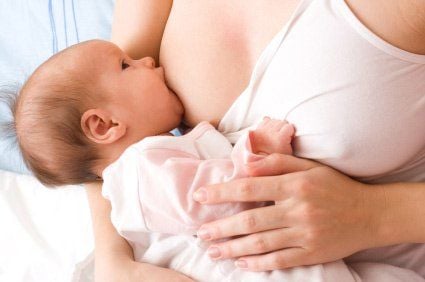This is an automatically translated article.
The article was professionally consulted by Specialist Doctor I Le Thi Phuong - Obstetrician and Gynecologist - Department of Obstetrics and Gynecology, Vinmec Ha Long International Hospital1. Learn about postpartum breast abscess
A breast abscess is an inflammatory, hot, red, and painful condition caused by a buildup of pus in the breast caused by bacteria. The most common are staphylococcus, streptococcus and some other bacteria such as bacilli, pneumococcus, anaerobic bacteria...Breast abscesses can form in front of the gland, in the gland, behind the gland. The development of an abscess usually goes through three stages: inflammation, abscess formation, and necrosis. Therefore, if you see signs of breast abscess after giving birth, you need to go to the doctor immediately to avoid serious complications.

2. Why is it easy to get breast abscess after giving birth?
The most common cause of postpartum breast abscess is blocked milk ducts. In addition, there may be other causes such as a weakened immune system, cracked nipples, scratched breasts. Then the bacteria will penetrate directly from the skin into the mammary gland, through the milk ducts... causing inflammation and the formation of an abscess.Milk duct blockage leads to breast abscess after birth because:
Milk is created in the milk follicles and then flows through the milk ducts to the milk-filled sinuses, under the stimulating effect of the baby's sucking movements, the milk will flow. go out. On the flow for some reason, the lumen of the milk duct is narrowed, often due to compression from the outside or blocked in the lumen, the milk will not be able to escape, then will gradually form a lump. As milk continues to be produced, the ducts before the blockage become more and more stretched. This phenomenon causes compression of other milk ducts, creating a pathological spiral, worsening milk blockage leading to mastitis, untreated mastitis will lead to gland abscess. breast .
There are also some of the following causes of breast abscess after birth in many mothers, such as: not stirring the breasts evenly to clear the milk ducts right after birth, not expressing excess milk when the baby is not suckling completely. stagnation of milk, unhygienic wipe clean nipples before and after feeding...
3. Cases with high risk of breast abscess
Postpartum women breast-feeding: Breast milk can cause cracked nipples or baby's teeth bite into the nipple... creating conditions for bacteria to enter the breast. Women in the period of giving birth or raising children are sick, eat poorly, stay up a lot at night, work hard but get little rest... causing milk to stagnate in the mammary glands, easily causing breast abscesses. Blocked milk ducts: Breastfeeding women do not clear the milk duct after giving birth, do not express excess milk when nursing, causing milk to become blocked, unable to escape, leading to curdled milk, compressing the ducts. Other milk forms abscesses in the breast.

4. Signs of postpartum breast abscess
Pain deep inside the mammary gland: A breast abscess is a condition in which a cyst contains pus and inflamed tissues in the breast. So when you have a breast abscess, you cannot avoid feeling pain deep inside the mammary gland. The pain will gradually increase when using the hand to press on the abscess area, moving the shoulder, arm. Swollen and Enlarged Breasts: The breasts are swollen and firmer than usual. The swelling and tightness in the breasts is getting worse and worse. When you have an abscess, you can feel hard lumps inside the breast with your hands: A typical symptom of a breast abscess in a nursing woman is that when you feel your breast with your hand, people can feel it. get one or more hard lumps inside the breast. At the site of these hard lumps, you will feel pain and redness. Painful Breastfeeding: If a nursing woman experiences mastitis, blocked milk ducts, or breast abscess, you will feel pain every time you breastfeed. Hot and swollen breast skin: If the breast abscess is not located deep inside the breast, you will feel the breast skin in the area where the abscess becomes swollen, red or light yellow, even necrotic, It feels hot when you touch it with your hand. Fever, feeling chills: There may be only a mild fever of about 38 degrees or a high fever of up to 39-40 degrees, depending on the inflammation in the breast. When a mother has a fever, she often feels chills and shivers. Complications - necrosis: The most serious complication of breast abscess is necrosis of the breast with severe infection symptoms such as: low blood pressure, body fatigue, breast enlargement, swelling, skin on the abscess. pale yellow, swollen lymph nodes, possibly ruptured abscess with foul pus.
5. Prevention of postpartum breast abscess
Maintain good hygiene of the breast and nipple area before and after breastfeeding, to avoid scratching and cracking the nipple while breastfeeding. Practice feeding the baby full, sucking from each breast, if the child has not finished sucking, express milk, avoiding milk stagnation, milk blockage, easy abscess. Strengthen the body's resistance by eating nutritious food, avoiding staying up late, and doing moderate work. If you have unusual symptoms, you should be examined and consulted with a specialist.
Please dial HOTLINE for more information or register for an appointment HERE. Download MyVinmec app to make appointments faster and to manage your bookings easily.














